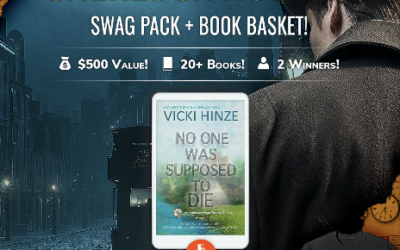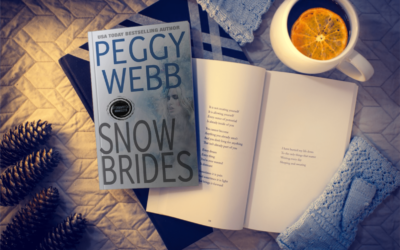Vicki Hinze © 2003-2011
We all know that in fiction, the plot, or sequence of novel events, must be logical and credible. The writer foreshadows major coming events, putting down a firm foundation, so that what happens next in the novel carries authenticity as the natural outgrowth of what has happened earlier in the story.
This holds true even if that event is not anticipated by readers–doubt does heighten tension–and, with that foundation in place, when that unexpected event happens, it is believable and seemingly inevitable.
That inevitability is the home of plot twists: those sudden unexpected turns a plot takes that make total sense to the reader.
Usually these twists are due to:
1. New information coming to light for the character.
2. A well-motivated change that might, or might not, have been anticipated and/or feared by other characters as a possibility.
3. An intentional act by an unexpected party that alters the course of events suddenly.
All of these possibilities require that the writer prepare the way for the plot twist before the twist occurs–that’s called foreshadowing. This foreshadowing is done by incorporating subtle references or hints–something that makes the plot twist logical and credible and plausible to the reader.
If the writer fails to foreshadow the plot twist, then when it happens, the reader will feel cheated and that the writer hasn’t played fair with them. The bond of trust between the reader and the writer (through the characters) has been violated and broken. That means whatever message the writer had hoped to share in writing the novel will be lost and unrealized. Readers don’t accept messages from writers they don’t trust. It’s that simple.
When a writer crafts a plot, s/he creates and maintains a fictional dream that takes readers by the hand and walks them down an imaginary line of events (that proves the writer’s message) from Point A to B to C to D and so on through to Point Z: the novel’s end. There’s an inevitable feel to this forward momentum, and that helps establish the bond of trust between writer and reader.
A happens. The Protagonist is motivated to react and does, which leads the Protagonist (and thus, the reader) to Point B. B happens, motivating the Protagonist to act, and s/he chooses to act, which leads that Protagonist to Point C. Choice is vital; no reactive characters endear themselves to readers, only those who willingly choose to sacrifice and put themselves, and what matters to them, on the line.
But let’s say the Antagonist doesn’t make the next move the Protagonist expected–to Point D. Instead, the Antagonist detours from that “Point” line and the character (and the reader) discover they’re in a new situation: at Number 5 on a Numeric line. The plot has twisted.
Now, to bring the reader with the character through the plot twist (maintaining the fictional dream), to keep the plot credible and logical (maintaining that bond of trust), the writer should have forshadowed the Antagonists’ ability to make this leap from letters to numerals (the expected to the unexpected).
To foreshadow: In two plot points prior to the actual twist, the writer should have:
1. Subtly incorporated the necessary skills in the Antagonist’s character, or
2. Noted that the Antagonist has the necessary abilities and skills.
In this case, those two previous plot points are A & B. In your novel, they might be in Scenes 1 and 7. Where in the novel the foreshadowing occurs is story dependent, but the foreshadowing should appear or be referenced twice before the actual plot twist occurs. That keeps with the Rule of Three, and prepares the reader for the twist.
That’s my interpretation of a plot twist. The expected/anticipated next event changing to an alternate event that is unexpected, unanticipated, yet credible, plausible, possible, and prepared for with a solid foundation of foreshadowing so that the twist strikes the reader as totally acceptable and subtly inevitable.
I’m not sure if you saw the movie, THE SIXTH SENSE, but it has great examples of plot twists. In it, we know the little boy sees dead people. Bruce Willis’ character helps the child work through his fears on this, shows the child the ghosts don’t mean to hurt the boy, that they’ve come for the child’s help.
As the movie progresses, the child tells Bruce’s character straight out that these people don’t know they’re dead. A few events (scenes) further along in the movie, the child helps Bruce by telling him how he can talk with his wife. Then comes the twist. Bruce talks to his wife–and learns that he is dead.
This is an “Oh, God!” moment in the movie. Unexpected by many but totally credible on all fronts. Bruce is a psychologist, who before he was shot, was slated to have an appointment with the child. The writer played fair, told viewers and the Bruce character that these people didn’t know they were dead. The boy helped Bruce to communicate. So the plot twist of Bruce being dead seems totally acceptable, credible, logical, plausible, and in an unexpected way that carries the sense of inevitability. After all, at the very beginning of the movie, we did see Bruce get shot. We did see the camera back off from him in such a way that we make the symbolic connection of his soul leaving his body and moving ceilingward–as we have read and heard happens from near-death-experiencers. And we did see his wife eating alone, him in the boy’s home but not actually talking with the boy’s mother. The hints were subtle, but definitely there.
In crafting a story, the writer leads the reader through the points of A to C carrying proofs to substantiate every move. But when the writer incorporates the twist and detours to the numeric line at Number 5, the reader should be able to think back to all that came before this point in the story and see that those proofs held double meaning. That is exactly what happened in THE SIXTH SENSE.
Following A to C seemed a natural progression. Yet A to C also held subtle evidence of the numeric line, Numbers 1 and 2. In other words, the viewer could forget what they thought they saw in those points and see them in a new light as the precursors for that parallel numeric line. And all the pieces fit. The points and the numbers (I know, numerals; it’s one of my quirks) are in place.
From the writer’s perspective: The writer develops Point A and B. But s/he also develops Numeric Line 1 and 2. And then the writer merges them, giving him/her A-1 and B-2.
What’s really happening? The writer is making sure:
1. The points fit, A to Z, and form a cohesive unit, standing alone.
2. The numeric lines fit, 1-100, and form a cohesive unit, standing alone.
3. The points and numeric lines are dovetailed so the sequencing and content of both are working in harmony with each other and enhance each other.
By no means must plot twists be as complex as the one in THE SIXTH SENSE, but it’s an excellent example of one that’s very well done.
A twist might be something as small as a character believing a specific, seemingly small thing about a second character and learning it’s not true. This truth can totally alter the first character’s outlook, which alters his/her opinion, or motivates him/her to take a different next step than planned. That truth could change the emotional, spiritual, or physical environment in the character. And that change can totally change the novel.
An example. Your spouse lies to you about something really important. You discover the truth from another source (not from your spouse).
How does this discovery impact your feelings for your spouse? About his/her character? About loving him/her? How does this lie and discovery impact your feelings about yourself? Do you question your own judgment? You did choose to trust him/her. Do you feel betrayed? Angry? How angry? Isolated? Alone? Guilty?
What is your reaction to the discovery? Say you learned the truth from a friend. How does this impact your friendship? Are you embarrassed and ashamed; move away from the friendship? Do you grow closer with the friend, seek counsel and comfort from him/her?
What are you going to do about this lie? It’s vitally important. (Characters must face conflicts of consequence to be admirable.) Are you going to confront your spouse? Ignore the discovery? Blame yourself? Forgive him/her? Divorce him/her? What are you going to do?
Odds are that something is going to change on some front. Staying within the confines of being human, odds are strong that every single thing that has occurred in the relationship up to the time of this lie and discovery coming to light are going to impact your decision. In other words, you’re going to take a hard look at what motivated your spouse to lie. Was it to protect you? To protect him/herself? Force? Fear? Cowardice?
Those motivations elicit different responses in you–and in your reaction to your spouse’s deceit.
The important thing to remember about plot twists is to develop those parallel lines. So that when a twist occurs, the reader finds it credible and makes the leap along with the characters. Those “Oh God!” moments delight and entertain long after the novel is read–and reread.




